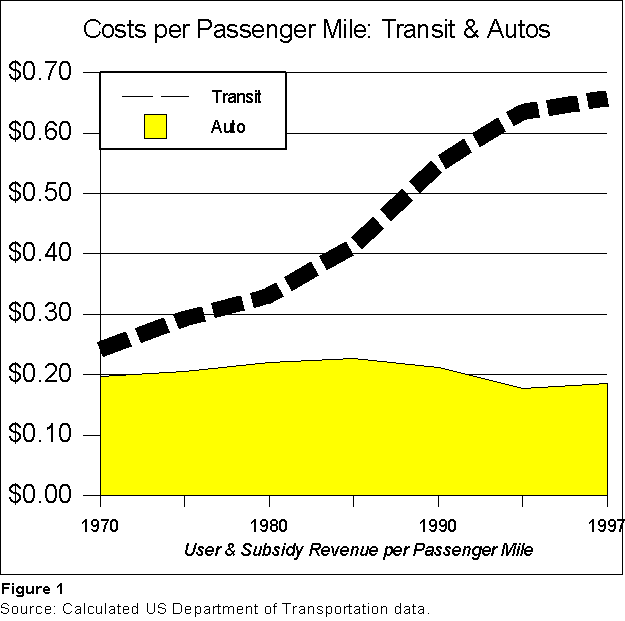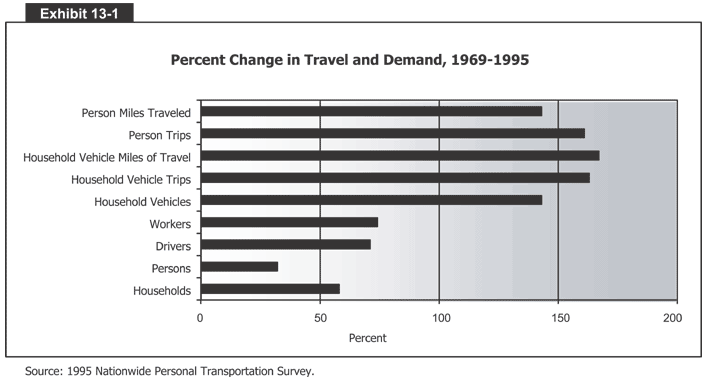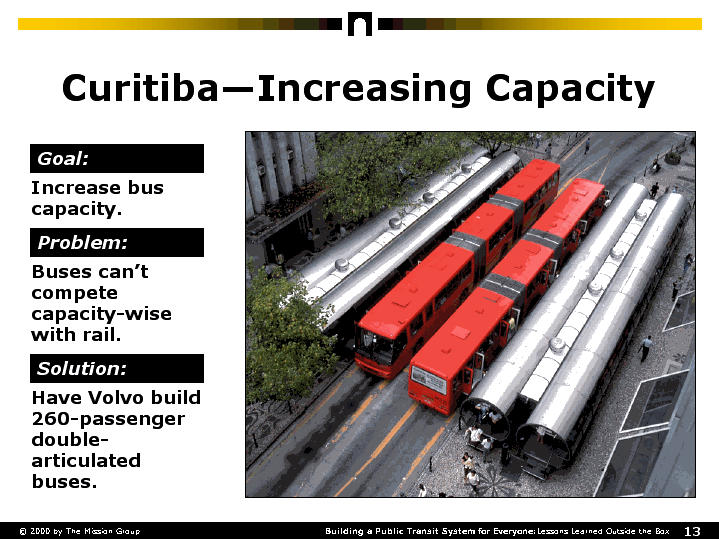
Bottom economic line is that, despite large scale investments, participation
in mass transit remains low.

Three important myths about Mass Transit as a consequence of low participation.
Myth no. 1: Increasing Federal Subsidies Will Attract More Transit Riders
Gross public transit ridership has been consistently falling since World War II. In 1945 ridership was 23.5 billion passengers, whereas in 1989 it was 7.5 billion--or less than one-third the 1945 level and less than half the 1950 level (Figure 4). The drop in ridership occurred despite huge increases in the number of urban commuters between 1945 and 1989.Portland's light rail line, which opened in 1987, attracted only one-third of its riders from the automobile; most other riders were diverted from buses. Buffalo spent more than $600 million, most of which was federal money, to construct a rail line, but combined bus and rail ridership in 1989 was 20 percent below the bus-only ridership figure for 1980. Miami's Metrorail, which was built in the 1980s with massive federal assistance and carried a final price tag in excess of $1 billion, is ridden by only 1 percent of Dade County residents. |
Myth no. 2: Public Transit Can Meet the Transportation Needs of Urban Commuters in the 1990s
The unavoidable truth for the transit industry is that today's metropolitan area is tailor made for cars, not for fixed-route public transit. Conventional transit cannot serve suburban areas with speeds and total travel times comparable to those of private transportation. Further investments in modes of transportation to accommodate travel patterns that predominated more than 40 years ago will not meet commuters' needs in the 1990s. |
Myth no. 3: Public Transit Conserves Energy and Improves Air Quality
With its continually declining work trip market share, public transit does not and cannot reduce energy consumption or air pollution. Some transit vehicles are overcrowded during peak hours in high-demand corridors. Yet, most of the time, there is excess capacity. The average public transit vehicle in the United States operates with more than 80 percent of its seats empty. Because of the low average number of passengers per bus, the energy consumption per passenger mile of public transit buses is now greater than that of private automobiles, and it far exceeds that of car and van pools. |
(The box is the approximately 9 trips per day that the average american household takes)

Will safeway.com make a difference?
